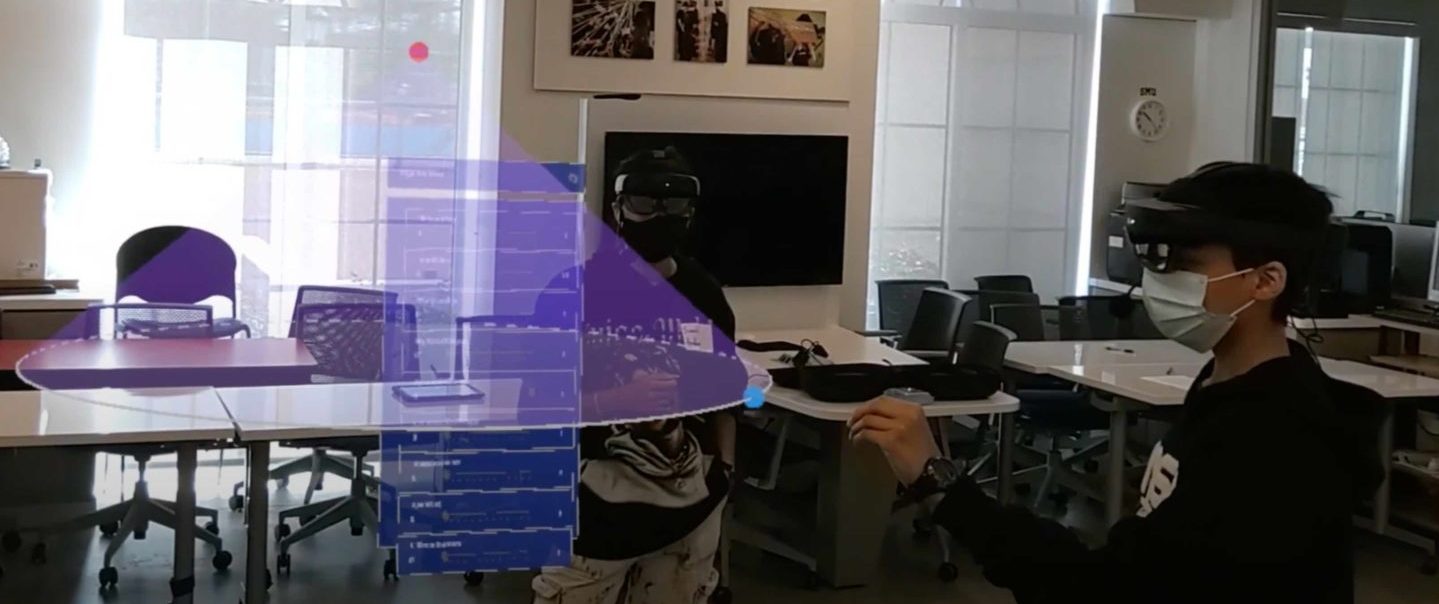Math teachers use gestures when confronting math problems. For example, a teacher might gesture a geometric shape with their hands, and other teachers might echo this same gesture with their hands. Or a teacher might propose a rotation of a shape using a sweeping around hand gesture, and another teacher might add on a reflection gesture where they flip their hand. (You can see these gestures in our activity called “The Hidden Village”.) We found that collaborative gestures were associated with higher performance levels, that they were “catching” among collaborators (i.e., gestures led to more gestures), and that teachers’ use of collaborative gestures was related to their beliefs about the effectiveness of gesture for teaching and learning. From all of this, we pointed to the strength of learning contexts where people can gesture about math together, observing and building upon each other’s motions and actions.
Recently, we have extended this work to look at how learners gesture collaboratively when using Augmented Reality (AR) technologies that facilitate working together – which we call “shared Augmented Reality” or shAR. shAR technologies project holograms in the space around learners wearing AR goggles, such that the holograms are layered on top of learners’ real-world surroundings. Learners can see the other people in their environment, and if those other people are wearing goggles, they can interact together with the same holograms in the same place at the same time. When these holograms are geometric shapes, this can allow learners to explore objects that are dynamic and truly three-dimensional together, manipulating the shapes using only their hands (the goggles have hand-tracking technology).
This kind of collaborative, intuitive manipulation of holograms can lead to collaborative gestures. Learners will use hand gestures to point at the holograms and to manipulate the holograms in different ways as they work to communicate spatial and relational mathematical information to their partner(s). They also will move their whole bodies around the holograms, to get a different perspective on the shapes or see things from their partner’s point of view.
You can see examples of these kinds of collaborative movements and gestures in some of our videos. We think that this kind of “collaborative embodiment” will be key to designing new learning technologies to enhance students’ mathematical understanding.
One point our research highlights is that much of students’ mathematical knowledge and mathematical communication is embodied – words are often not as precise or helpful for communicating spatial and relational information as gestures are. We believe that finding ways to leverage student gestures during instruction has the potential to open up mathematics to many more learners. New technologies, like AR, VR, touch screens, and motion capture, can allow us to use and elevate the role of gestures in ways never before possible.
To learn more, see the corresponding chapter of Movement Matters (MIT Press, 2022).
The open access version can be found on MIT’s website.

